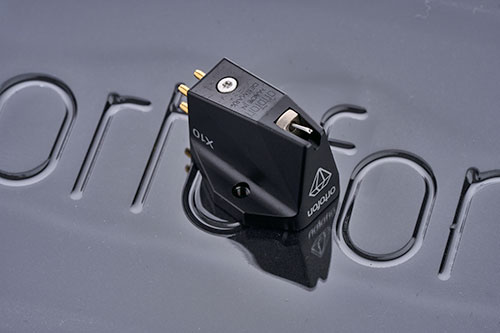With the matching cartridges, the Keces Ephono turned out to be a real bargain: So much superb sound and substantial usage of materials plus good workmanship can hardly be found elsewhere at this price. The Sphono now also offers higher load impedances and even more features. Does it also have more to offer in terms of sonic performance?
Regarding the Ephono, I had wondered where Keces did cut costs considering its highly customer friendly price, but only became aware of the fact that both manufacturer and distributor were quite stingy with information on the technology. And even if the Sphono is more than three and a half times more expensive than the Ephono, you certainly mustn’t expect more facts on circuit details for the higher price. Aside from highlighting the built-in features, the product information of the company, which became known as a specialist for power supply technology, merely points out that the external mains supply, called the Spower, provides two voltages: 15 volts, as well as plus/minus 48 volts. With this unusually high voltage, reminiscent of the Voltair technology from SPL with its plus/minus 60 volts, you probably needn’t to worry about headroom or overload stability any longer. Instead, one can splendidly speculate about the issue whether the Sphono works with an active, semi-active or passive RIAA de-emphasis, since any further particulars cannot be obtained.

Let's now move on to the features: The Sphono has four unbalanced inputs, two for moving-magnet and two for moving-coil cartridges. Individual loads of 47, 100, 150, 220, 330 and 470 picofarads can be switched in parallel to each of the two MM inputs, while for the two MC inputs load impedances of 56, 100, 220, 470, 1200 and 47000 ohms are at the user’s disposal. By combining the individual values, of course also intermediate values can be defined. For those who do not want to be involved in complicated calculations, we recommend the Sengspiel Audio calculator (www.sengpielaudio.com/Rechner-parawid.htm ) for the parallel connection of resistors.

-
Ortofon MC X10
Der renommierte Tonabnehmer-Hersteller Ortofon implementiert die Gene seiner großen MC-Systeme in die neue Einstiegsserie „X“ und bettet sie in ein innovatives Gesamtkonzept. Wir testen das günstigste Modell MC X10 zum Preis von 300 Euro, das bereits mit technischen Finessen wie um 90 Grad gedrehten Reinsilberspulen aufwartet. Wie sehr liebe ich Ortofon! Es gibt keinen anderen Tonabnehmer-Hersteller, von dem ich im Prinzip jedes Modell blind kaufen würde. Und dies bereits zur Genüge auch getan habe. Der…08.07.2025 -
WestminsterLab Lumin Power X1 DC Cable
Auch wenn dies bereits der fünfte Artikel ist, der Erzeugnisse von WestminsterLab zum Gegenstand hat, ist es der erste, in dem es um ein Kabel geht – und was für eins: ein Gleichstromkabel für die Verbindung von Netzteil zum Hauptgerät eines einzigen Herstellers: Lumin. Noch dazu ist das Kabel in Relation zu den Geräten recht kostspielig. Ich gebe gerne zu, dass ich von allein niemals auf die Idee gekommen wäre, mich mit WestminsterLabs Lumin Power…04.07.2025 -
Acousence dac-pre reference UX
In vielen meiner Tests kommen Produkte von Acousence vor, wenn auch nicht namentlich. Denken Sie nur an Schostakowitschs Symphonie Nr. 15 mit den Duisburger Philharmonikern: ein vorzügliches klingendes Album, egal ob als File oder als LP. Doch Acousence steht nicht nur für Aufnahmen, sondern auch für Hifi- und Studio-Equipment der etwas anderen Art. Der Kopf hinter Acousence – ein Kunstwort aus „acoustics“ und „experience“ – ist Ralf Koschnicke. Er betreibt ein Tonstudio, ist Mitglied im…01.07.2025 -
Goldring Ethos SE
Seit dem Bestehen von hifistatement – und das sind nun auch schon 14 respektive 16 Jahre – testeten wir einen einzigen Goldring-Tonabnehmer: Dabei tauchte das Elektra nur kurz im zweiteiligen Berichts über den Transrotor Crescendo auf. IDC Klaassen, der neue Goldring-Vertrieb, wollte das ändern und schickte das aktuelle Topmodell nach Gröbenzell. Auch wenn es in der Einleitung ein wenig anders erscheint, haben die Kollegen und ich schon durchaus Erfahrungen mit den Systemen oder zumindest den…24.06.2025 -
Transparent Audio XL Power Cord
Als ich kürzlich Luis Fernades und Werner Möhring in Meschede besuchte und wir den Test der Finite Elemente Carbofibre° Statement verabredeten, schlug der Geschäftsführer des G8-&-Friends-Vertriebs vor, auch mal eines der besseren Stromkabel von Tranparent auszuprobieren. Doch wie testet man ein einzelnes Netzkabel in einer gut abgestimmten Kette? In meiner Anlage versorgt fast durchgängig von Garth Powell entwickelte Netztechnik der Marke Audioquest die Komponenten mit Energie. Allerdings ist seit der ungemein aufwendigen Beschäftigung mit den…20.06.2025 -
SilentPower Omni LAN
Welch positive klangliche Auswirkung die Synchronisation mit einer 10-Megahertz-Clock hat, haben Roland Dietl und ich an dieser Stelle schon häufig beschrieben. Allerdings bewegten sich beispielsweise alle dafür geeigneten Switches im gehobenen vierstelligen Preisbereich. SilentPowers Omni LAN hat einen Clock-Eingang und kostet gerade mal 800 Euro. Wer vielleicht durch Wolfgang Kempers Test des SilentPower LAN iPurifiers Pro mitbekommen hat, dass SilentPower eine Untermarke von ifi ist, kann sich gewiss erklären, warum das Omni-LAN-Switch trotz seiner vielfältigen…17.06.2025
© 2025 | HIFISTATEMENT | netmagazine | Alle Rechte vorbehalten | Impressum | Datenschutz























 |
|


































































































